TABLE OF CONTENTS
📲 Take this 2 minute lesson on eduMe to learn about preboarding even faster
The job market is saturated with opportunities for job seekers, meaning employees have more decision-making power than ever before. In the US, there are 1.4 million more jobs than unemployed people.
However, the primary challenge for companies now is not just attracting talent, but keeping them engaged. When you consider that 20% of new hires leave within their first 45 days of employment, it’s clear that employee engagement must be at the forefront of every HR team’s minds.
So, how can you ensure new starters are invested in your mission from day one?
With preboarding. Engaging new hires before they even step foot in the office not only makes a good first impression, it also leads to reduced time to productivity and a boost in employee retention.
Here's how 👇

What is preboarding?
First things first - what is preboarding? It sounds similar to onboarding because (surprise!) it is.
Onboarding is the period between your new hire’s first day on the job and the end of their induction into the company. This period can span anywhere between day one and the end of their first year, depending on the company.
Preboarding is the period of time between an employee accepting their job offer and their first day. Essentially, it’s a subsection of the overarching onboarding process.
→ Download Now: Onboarding Checklist Template
Why is preboarding important?
Your initial thought might be: “Why’s that important, they aren’t even working for us yet!”
However, you should start your employee’s journey with you as you mean for it to go on.
Preboarding fosters loyalty
If inspiring loyalty is important to you, it should be important from the start. Optimising employee engagement should be part of every business’ success strategy, and the time before someone joins shouldn’t be exempt. If anything, this is your chance to ramp things up - it’s a short window in which you can impress with a taster of what’s to come.
It’s also important to remember that just because a new hire has accepted your offer, does not mean you are safe. It’s not unlikely that your offer is being weighed up against others, or being used as a bargaining chip with a current employer.
The job market has changed; employees no longer have tunnel vision for one employer. 59% of employees said they’d take up a similar role at a different company today if offered, and more than a third are actively looking for jobs. Millennials who have been termed the ‘job-hopping generation’, are set to make up 75% of the workforce by the end of 2021, as cited in Deloitte’s Global Millennial Survey.
Preboarding prevents turnover
“New hire turnover” should be a concern at the forefront of every HR department’s minds, especially as replacing an employee who has quit costs a company between $3000 and $18000. Churn in the gig economy is particularly high, with Business Insider reporting that some gig employers could have a turnover as high as 500% per year.
It’s known that onboarding and employee retention are closely tied - great employee onboarding can improve retention by 82%.
A large part of the onboarding process (and some of the preboarding process) comprises logistical and administrative tasks. But this type of activity won’t result in an emotional attachment to your company - there’s nothing engaging about setting up an account in your HR tool.
Things like inviting them to meet the team or see the office, on the other hand, will engage. Preboarding is going that extra mile to combat attrition rates and reduce churn.

What should be included in preboarding?
Most companies carry out some form of preboarding, whether knowingly or not. This often consists of sending over payroll information to fill out, or an email which will mention when an employee is to arrive on their first day.
Sound familiar?
The problem with this type of “preboarding” is that it is not motivated by a desire to provide a new hire with a tailored experience that breeds trust and loyalty by catering to them. It’s done purely to save time on an employer’s end. It doesn’t make for a good employee experience, nor make you stand out.
Here are seven strategies to employ to make sure a new starter is raring to go rather than reluctant.
1. Introduce a buddy system
Buddy them up with someone in the company. This usually happens as part of the onboarding process, but why not push it forward?
Virtually introduce them to someone they might collaborate closely with. New starters often have many questions but may hold back for fear that they are asking too much. You can curb this by making sure they have more than one designated person to turn to, and can lean on their buddy while settling into a new company culture.
2. Announce new arrivals
Introduce new arrivals with a company-wide email announcement. You can briefly detail their work history, when their first day is and share their LinkedIn profile for the team to connect with. Throw in an anecdote about why they stood out so much during the hiring process, or why you’re so excited to have them join.
This simple action can make new hires feel more valued and drums up excitement in the team.
3. Invite them to a company event
This could take on many forms - a casual lunch, or an invitation to any recurring (or one-off) events like weekly huddles or drinks.
Inviting new hires to these events provides an opportunity for them to get to know their future colleagues in an informal setting. The more faces they are familiar with ahead of their first day, the less daunting it is. 
4. Prepare a welcome pack
A gift will go a long way in making a new hire feel at ease, valued and part of the team before they’ve even arrived. Think: signed cards, branded stationery, swag. It’s high pay off for minimal effort - signing a welcome card expressing how enthusiastic you are about their arrival takes less than a minute and makes all the difference.
5. Stay in touch before they start
Depending on an individual’s situation, it could be one short week or two long months before they start with you. If the preboarding period is longer, check in with them across the course of it.
You can send over some light reading so they feel empowered with the knowledge they need to hit the ground running. Or just let them know you’re there if they have any questions. Adding extra touchpoints is crucial. If there’s nothing but radio silence, they are far more likely to entertain other offers or continue interviewing elsewhere.
6. Share your company handbook
If you’ve got a company handbook and benefits guide, be sure to send it over before they begin. This way they can get read up all about your company culture, perks and policies so they are in-the-know about what you have to offer and what they can expect from you as an employer.
7. Send a first day email
First days are overwhelming - from multiple introductions to familiarising yourself with a new environment. Before they start, send over an email containing first day guidance.
This could be what to wear, when to arrive, what to bring, plus calendar invites to introductory meetings, onboarding sessions and lunches. All so they can arrive prepared and knowing exactly what the day will entail. 
The takeaway
By employing preboarding into your recruitment and onboarding strategy, you help keep up the momentum and excitement established in the hiring process.
But most importantly, it reassures your new employee that though they may have been swimming in a sea of choice, choosing your company was the right one.
Utilising a mobile-based microlearning platform such as eduMe allows companies to deliver enhanced preboarding education and hook new hires from the get-go. With the ability to access bite-size lessons anywhere and at any time, new employees can engage with and learn about your company in a way that suits them.
Join the companies such as Uber, Gorillas and Gopuff that are already harnessing the potential of microlearning👇
Join 10,000+ frontline leaders
Subscribe to ‘Training the Frontline’ and get weekly insights sent straight to your inbox.

